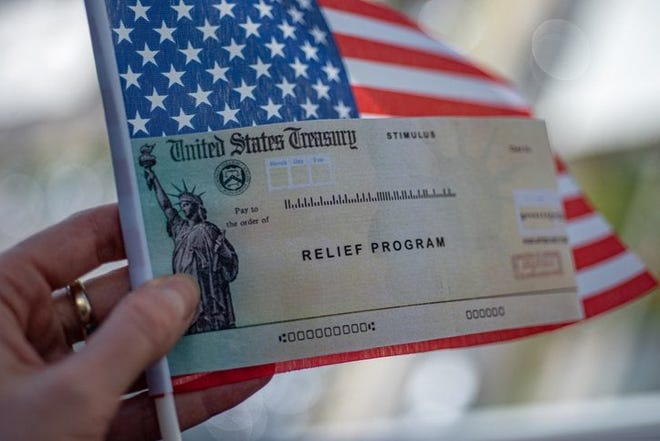(GNB- Washington D.C.): President Biden signed the American Rescue Plan Act on March 11. Provisions in the bill authorize another round of $1,400 stimulus checks for each eligible person ($2,800 for couples), plus an additional $1,400 for each dependent. However, as with the first- and second-round payments, the third-round stimulus checks will be reduced – or eliminated – for people with an income above a certain amount.
Below calculator provides an estimate of the amount you might receive in a third federal stimulus check, based on the information you enter. This is only an estimate; the actual amount you receive, if any, will be determined by the Internal Revenue Service (IRS), the government agency in charge of disbursing the third round of stimulus checks, formally known as economic impact payments.
How much is the stimulus payment?
Eligible individuals can receive a stimulus check of up to $1,400. Couples who file joint tax returns can receive up to $2,800. Families with dependents can receive an additional $1,400 per dependent. People who are American citizens but filing jointly with someone who is not a citizen will be eligible for the stimulus check. People without a Social Security number generally cannot get a check. Stimulus checks are not taxable.
When can i expect to get my check?
Payments will start to roll out in March. Most people will get their checks via electronic bank deposit, which is the fastest method. Generally, if you got your first and second stimulus checks via electronic bank deposit, you’ll get the third one that way, too.
What information do I need to use the stimulus check calculator?
The calculator asks about three things: your tax filing status (single, married filing jointly, married filing separately, head of household, or qualifying widow or widower); your adjusted gross income (AGI) from your 2019 or 2020 tax return; and the number of people you claimed as dependents.
Is there an income limit to receive a stimulus check?
Yes. An individual with an AGI of up to $75,000 would receive the full $1,400 check; a couple filing jointly with an AGI of up to $150,000 would receive $2,800 ($1,400 per eligible person). A head-of-household filer with an AGI of up to $112,500 would receive the full $1,400 check.
The amount of the stimulus check is reduced once AGI exceeds these limits. An individual (either single filer or married filing separately) with an AGI at or above $80,000 would not receive a stimulus check. A couple filing jointly would not receive a stimulus check once AGI is at or above $160,000. Someone filing as head of household with an AGI at or above $120,000 would not receive a stimulus check.
How does the stimulus check calculator estimate reduced payments?
Once the AGI for a filer hits the income limit for the full stimulus check, the amount of the payment is reduced. The payment amount phases out completely once a filer’s AGI exceeds the maximum AGI for the filing status. Our calculator uses the rate of reduction provided by the IRS to calculate your estimated stimulus check based on the information you provide.
Can I use the calculator if I haven’t filed a tax return for 2020?
Yes, you can use your 2019 tax return. The IRS emphasizes that if you use your 2020 return to estimate your payment, don’t guess your AGI: File an accurate return first. Adjusted gross income, as the name implies, is your gross income (wages, dividends, capital gains, retirement distributions and other income) minus certain adjustments such as educator expenses, student loan interest, alimony payments and qualifying contributions to retirement accounts. You can find AGI on line 11 of your 2020 federal 1040 income tax return or line 8b of your 2019 return.
If you weren’t able to claim your earlier $1,200 or $600 stimulus checks, you can do so on your 2020 tax returns. Use the Recovery Rebate Credit Worksheet and enter the amount from the worksheet onto Line 30 of your 1040.
Will anyone receive a stimulus check who didn’t file a tax return in 2020 or 2019?
Some people will. Eligible Social Security beneficiaries and railroad retirees who are not typically required to file a tax return will automatically receive a $1,400 stimulus check. The IRS will use the information contained in annual SSA-1099 and RRB-1099 tax forms to generate the stimulus checks automatically. Recipients of Social Security Disability Insurance (SSDI) also receive SSA-1099 tax forms and will receive $1,400 stimulus checks automatically. In addition, Veterans Affairs (VA) beneficiaries and recipients of Supplemental Security Income (SSI) will receive automatic $1,400 checks.
Source: AARP/OMNI
A global media for the latest news, entertainment, music fashion, and more.





